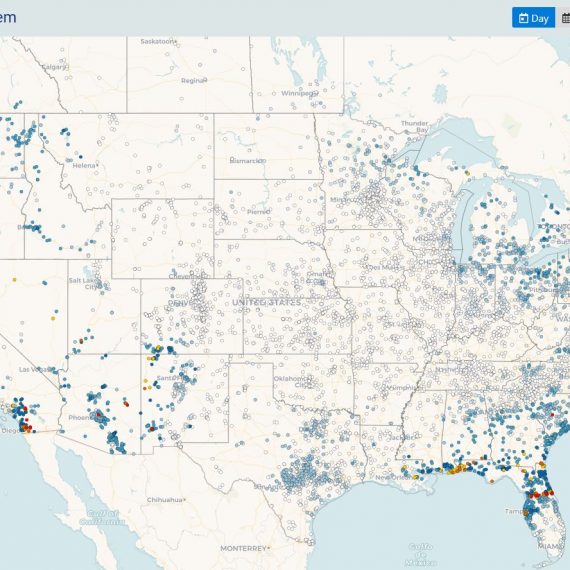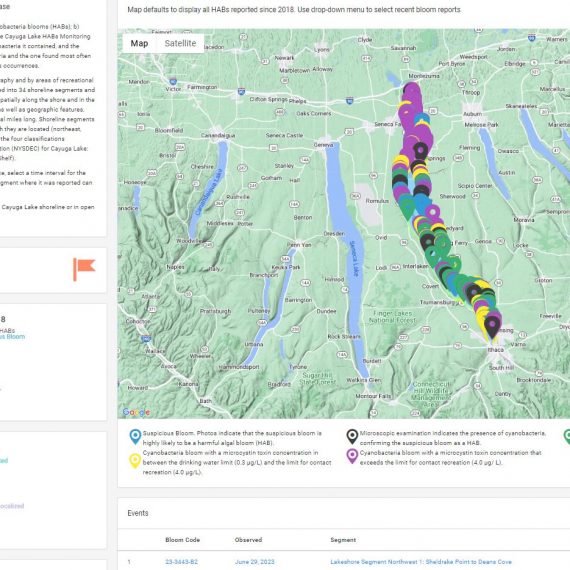may, 2020
06mayAll DayStream Monitoring Event for the Streamwatch Volunteer Group
Event Details
Volunteers will be monitoring Taughannock Creek and Trumansburg Creek today as part of CSI’s Synoptic Stream Monitoring Program. These volunteers will be collecting field measurements and water samples at
Event Details
Volunteers will be monitoring Taughannock Creek and Trumansburg Creek today as part of CSI’s Synoptic Stream Monitoring Program. These volunteers will be collecting field measurements and water samples at 15 locations throughout the watershed. Samples collected by volunteers are analyzed at our EPA certified water testing lab for over 12 characteristics of water quality including nutrients, sediment, and pathogenic bacteria. Visit the Community Partnerships page for more information about the Synoptic Stream Monitoring Program. Volunteers can find a guide to sampling procedure and tracking sheets on the Volunteer Resources page.
The water quality of Taughannock Creek and Trumansburg Creek was first monitored by these volunteers in partnership with CSI in 2006. Over 13 years of data show the water in Taughannock Creek to have low concentrations of nutrients relative to northern tributaries in the Cayuga Lake watershed. Water samples collected at the mouth of Taughannock Creek average 16.28 mg/L of total phosphorus and 0.83 mg/L of inorganic nitrogen during baseflow conditions. However, under stormflow conditions, concentrations of nutrients and sediment in Taughannock Creek are much higher. Water samples collected at the mouth of the creek under stormflow conditions average 160.52 mg/L of total phosphorus. These results can be viewed and downloaded for use on CSI’s public Water Quality Database.
Concentrations of nutrients in Trumansburg Creek just to the north are far higher. Under baseflow conditions, the average concentration of total phosphorus measured at the mouth of Trumansburg Creek is 65.14 mg/L and 2.48 mg/L of inorganic nitrogen. In the late 2000s, high E.coli concentrations were measured at the monitoring locations near the mouth of the creek. This led to investigative sampling by CSI volunteers to identify the source of the loading upstream to be the Trumansburg Wastewater Treatment Facility. CSI data prompted a follow-up investigation by the New York State Department of Environmental Conservation (NYSDEC) which confirmed the elevated levels of E.coli. These findings initiated a $6 million dollar upgrade to the treatment facility in 2016, and since the upgrade, E.coli concentrations measured downstream have been low or non-detectable.
Taughannock Creek is a large river that flows through the town of Lodi, Covert, Hector, Enfield and Ulysses. The creek flows over the famous Taughannock Falls. The name “Taughannock” is derived from Native American terms meaning “large falls in the woods”. With water falling 215 ft. from the riverbed to the bottom of the gorge it has carved, Taughannock Falls is the highest single-drop waterfall east of the Rocky Mountains. From the base of the falls, the river flows over bedrock and over a shorter waterfall into Cayuga Lake. The short length of river between the lake and this small set of falls is important habitat for trout searching for spawning habitat in the spring and fall. Taughannock Creek is 67 square miles of forest and wetlands (37%), agricultural land (57%), and developed land (6%) (NLCD 2016).
Trumansburg Creek is a smaller adjacent tributary just to the north. It flows through the town of Lodi, Covert, Hector, and Ulysses. The creek flows through the village of Trumansburg, and over the beautiful Frontenac Falls along its path to Cayuga Lake. Trumansburg Creek is 14 square miles of forest and wetlands (25%), agricultural land (66%), and developed land (8%) (NLCD 2016).
If you are interested in helping CSI protect water in the Taughannock Creek and Trumansburg Creek watersheds, please email our Outreach Coordinator Nathaniel Launer.
Time
All Day (Wednesday)
Organizer
Community Science Instituteinfo@communityscience.org




Leave a Comment